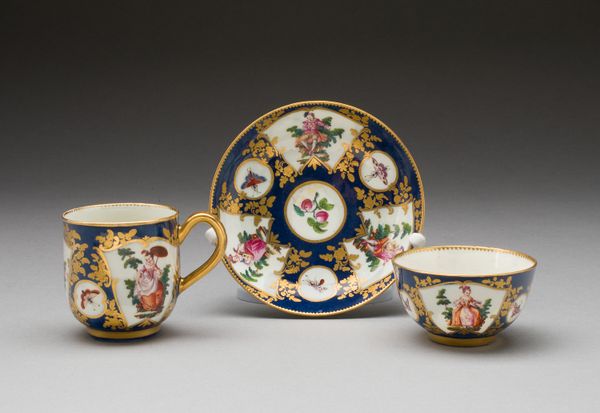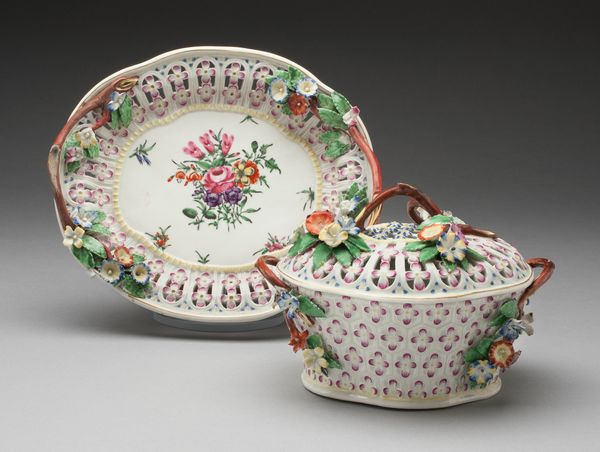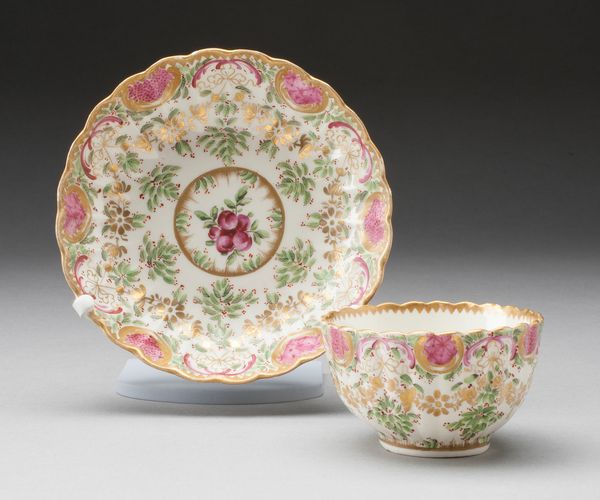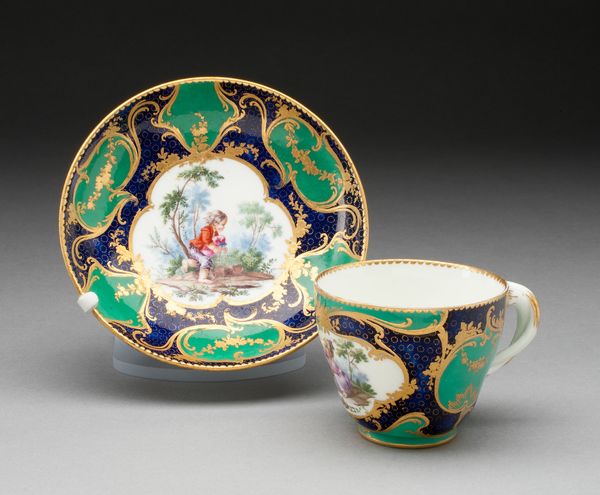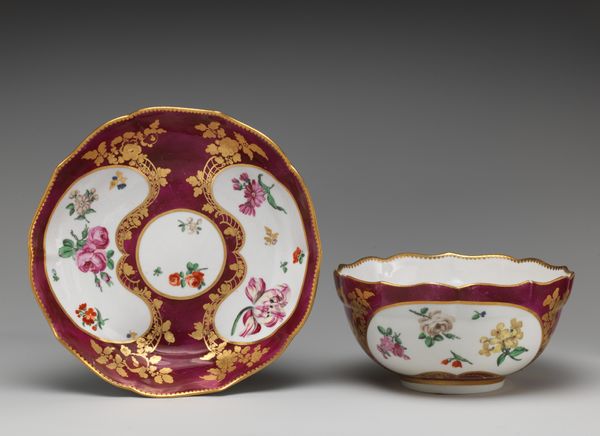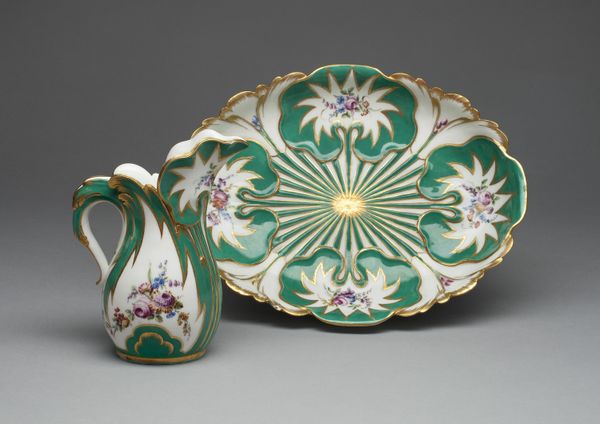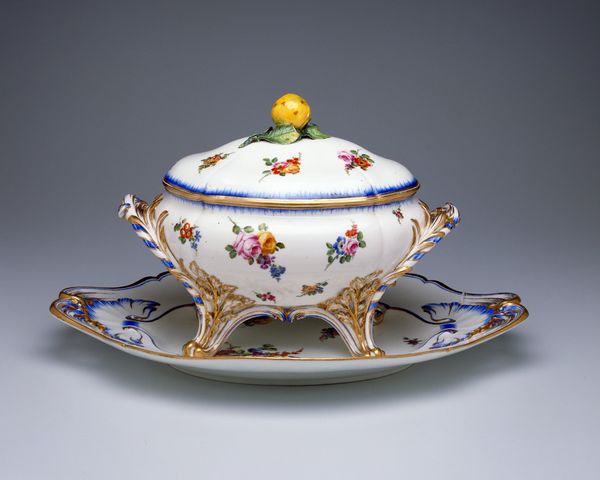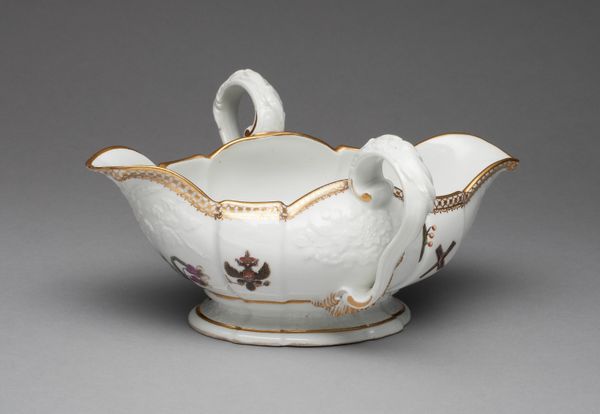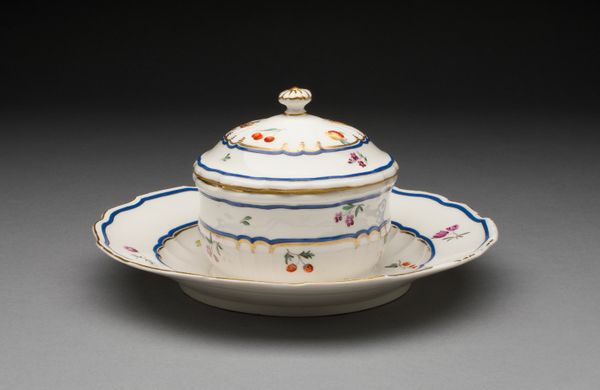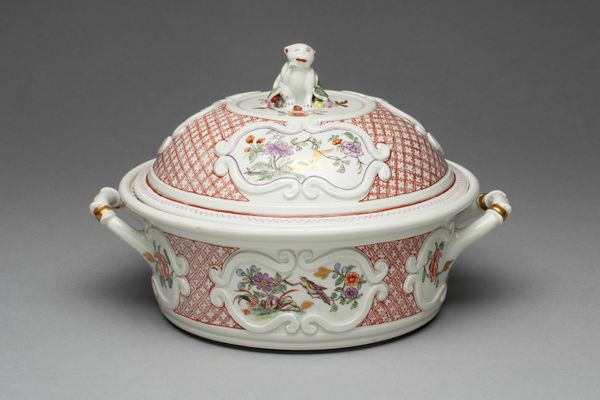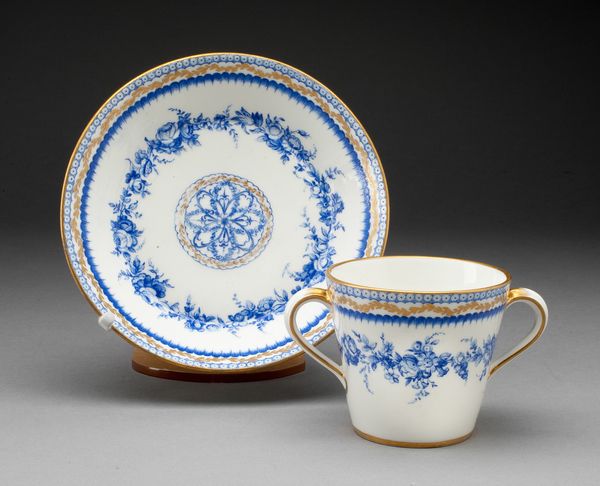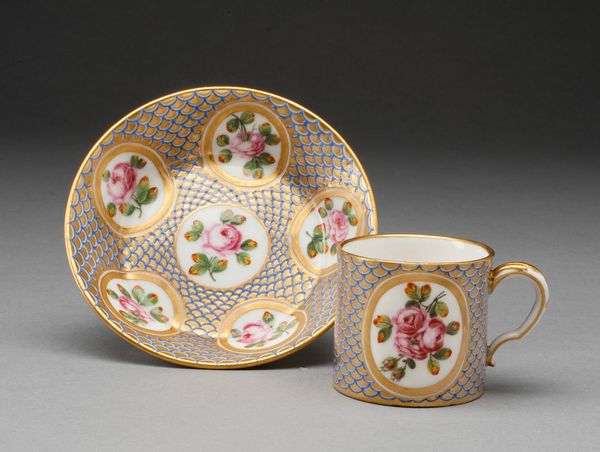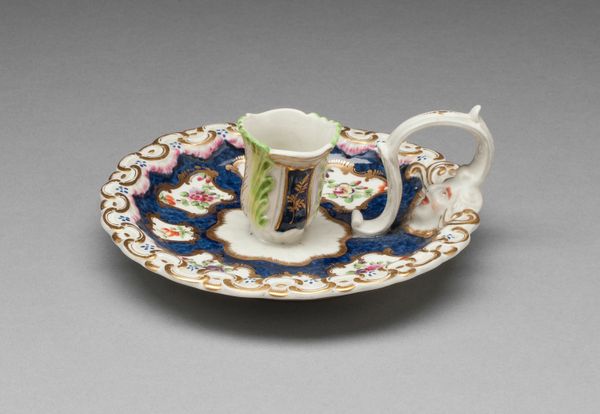
Dimensions: Overall H. 12.7 cm (5 in.); Stand: 4.5 × 23.9 × 21.6 cm (1 3/4 × 9 3/8 × 8 1/2 in.); Bowl: 11.4 × 18.1 × 14.3 cm (4 1/2 × 7 1/8 × 5 5/8 in.)
Copyright: Public Domain
Curator: This exquisite piece before us is entitled "Covered Bowl and Stand," also known as an Écuelle, created in 1779 by the Manufacture nationale de Sèvres. Editor: Oh, my! What a delicate and seemingly frivolous object! There is an undeniable sense of privilege radiating from the fine porcelain and intricate decoration. Curator: Indeed. Crafted from soft-paste porcelain, this bowl and stand demonstrate the incredible skill of Sèvres artisans. We see gilded detailing alongside printed and painted decoration. I think a consideration of the resources available during its production is useful in approaching its interpretation. Editor: Absolutely. Its Rococo style signals the opulent lifestyles of the French aristocracy and their pursuit of pleasure before the Revolution. These birds, garlands and idealized scenes—they speak of an era completely removed from the realities faced by most of the population. Do you think of this object as complicit in that obfuscation? Curator: As objects from this era go, I feel there is nothing particularly radical nor problematic about this particular bowl, no. Instead, I see how it perfectly fulfilled its function—which was, after all, to elevate an everyday action, like eating soup, into something more theatrical. It merges craft and function quite elegantly. The quality of materials used here underscores the attention and value invested in it. The porcelain itself was likely sourced from a specific region in France or imported. Editor: That elevation of the everyday at the expense of genuine human connection, though…I also think of the female labor in ceramic production and how those voices were systemically marginalized, hidden behind the more famous "masters". Considering their place and involvement is not insignificant. Curator: The division of labor at Sèvres was extensive and intricate, definitely not equal. There was hierarchy within hierarchy, so some craftspeople who were painting these details may have come from extremely different classes. Understanding the socioeconomic conditions of these people enriches how we assess the overall artistic accomplishment here. Editor: Yes, and while acknowledging technical mastery is key, it’s important to remember art also serves ideological purposes, and sometimes unintentionally preserves harmful societal norms and practices. Curator: I would add that, from my vantage, understanding how it came together can reveal stories we may never discover any other way. It's not about condoning but understanding the circumstances of material creation in shaping both artistry and society. Editor: A delicate balance. But the goal should always remain striving to hear and uplift the diverse voices behind all creation and consumption, no? It’s crucial that art does not operate in a bubble, then or now.
Comments
No comments
Be the first to comment and join the conversation on the ultimate creative platform.
